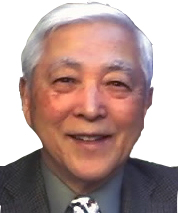
The 7th Annual International Neurosurgery Conference
 |
Professor Shokei Yamada MD PhD FACS |
I was born as the seventh generation of the traditional Yamada Physicians’ family, and my two brothers also became physician-surgeons. After graduating from the Jikei University School of Medicine (1949), I had general surgery training and PhD education. Then, my specialty training extended to neurosurgery at the University of Toronto, University of Chicago, and the University of Oregon Medical School (1956-1962). My mentors were Professors E. Harry Botterell, Toronto), Joseph P. Evans and Sean P. Mullen (Chicago), and George M. Austin (Portland OR). After completion of the training (1962), my teaching career started at Jikei University Medical Center, and then extended to the Medical University of South Carolina, associated with Professor Julian Youmans, later with Professor Phanor Perot, and further to Loma Linda University Medical Center with Professor Austin. My rank advanced through Assistant, Associate and Full Professor. The last six years of my tenure was spent as Chairman at the Department of Neurosurgery. After changed to the Emeritus status, I have been a consultant at the Kaiser Permanente Medical Center, Fontana, CA and Arrowhead Regional Medical Center, Colton, CA.
Throughout my neurosurgical career, I have been involved in combined clinical and research work. My projects and publications include 1) Longitudinal myelotomy (advanced from Bischof’s myelotomy) for which I received a distinguished award for poster presentation at the American Congress of Neurosurgeons; 2) VA (and VP) shunt flow and intracranial pressure changes from the recumbent to upright position, which is the only article on the subject ever found in the literature; 3) Pathophysiology of tethered cord syndrome, which proved the existence of a stretch-induced functional and reversible spinal cord disorder, by the anatomical, biochemical (oxidative metabolic), and electrophysiological studies (the research solved the seven decades of neurosurgeons’ skepticism toward this disorder); 4) Surgical resection of AVMs located in the functional areas of the brain by delineating the border of the AVM and brain tissue (supported by anatomical, angiographic, and cerebral oxidative metabolism studies). 4) Establishment of cerebral oxidative metabolic improvement parallel to the cerebral blood flow increase in patients who underwent STA-MCA anastomosis; 5) Bypass coaptation of the C3 and C4 anterior primary rami to the upper trunk of the brachial plexus to restore the function of shoulder girdle muscles and biceps in patients with Erb-Duchenne palsy due to C5 and C6 nerve root avulsion, and also to regain small hand muscle function by the coaptation to the lower trunk for Klumpke palsy due to C8 and T1 root avulsion in children (The poster of this subject received the blue ribbon at the Spine and Peripheral Nerve Section meeting of AANS).
I contributed 150 original publications based on scientific investigation and clinical work. I have edited three books related to tethered cord syndrome and AVMs, and currently continue to publish articles. I play violin with classic music, and refrain from strenuous sports such as Judo and baseball, which I used to play in the younger days. I am married to Rachel Thomasson for 41 years, and we have three children. Vivian, the older daughter, a clinical psychologist serves as Associate Director at the Counseling Department, the University of Central Florida, Orlando, our son Brian, urologist, and his wife Jennifer, anesthesiologist, practice in Albany, NY, participating in resident education at the Medical College of Albany, and the younger daughter with BA degree as a communication specialist lives in Riverside, CA.
Shokei Yamada, MD, PhD, FACS
Department of neurosurgery
Loma Linda University
Loma Linda, CA, USA
yamada1000@gmail.com
| Contact | The 6th AINC | To join the NSRL | Annals of Neurosurgery | ©1998-2011, Neurological Surgery Research ListServ